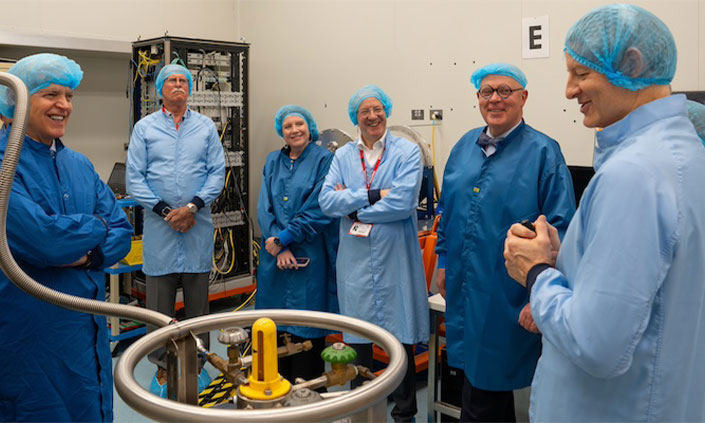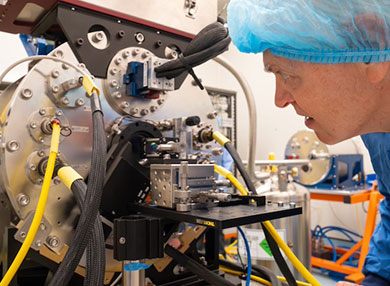AAO’s latest instrument heads to Türkiye
This month, AAO’s latest astronomy instrument DIRAC will be shipped for installation in a new telescope being built by Türkiye’s national observatory.

Balaclava Rd, North Ryde, Macquarie University
NSW 2109 Australia
AAO engineers will accompany the instrument to Eastern Anatolia in Türkiye to assist with its installation at the new observatory.
DIRAC, the Diffraction limited InfraRed Adaptive optics Camera, is a state-of-the-art near infrared camera designed and manufactured by AAO for Türkiye’s national observatory, destined to be installed on the brand new Doğu Anadolu Gözlemevi (DAG) telescope currently under construction in Eastern Anatolia.
“The DIRAC instrument gives astronomers a powerful new tool to see the cosmos in incredible detail, and especially at the near infrared wavelengths that are relevant for exploring many of today’s great questions in astronomy and cosmology,” says Professor Richard McDermid, Interim Director of AAO.
“The combination of the DAG telescope, a new adaptive optics system and the DIRAC camera will give astronomers a combined system that delivers high definition and night-vision imaging, which will be used to study stars, planets, and galaxies.”
Long history
This year AAO celebrates its fiftieth year of specialist engineering services to the global astronomy community – designing and building custom instruments and data services for professional telescopes and observatories around the world.
These instruments and services serve to supercharge the telescopes, by capturing and transforming the collected light into useful data for astronomers and researchers.
These precision devices are typically installed in observatories perched on top of remote mountains, where clear skies and minimal light pollution offer optimal stargazing conditions.
“Our instruments are unique to each telescope and the many scientific questions that they help astronomers to explore,” says Dr Nick Cerneaz, Head of Engineering at AAO.
“Installed in such remote and hostile locations, these projects demand extreme precision and quality in the work we do to ensure the instrument works flawlessly and for the long haul,” says Dr Cerneaz.
Leadership support
On 30 September, Professor McDermid and Dr Cerneaz, welcomed university leaders including Vice-Chancellor Professor S Bruce Dowton, Executive Dean of the Faculty of Science and Engineering Professor Lucy Marshall, Deputy Vice-Chancellor (Research) Professor Sakkie Pretorius, and CFO & Vice-President Finance and Resources Mr Robin Payne to review the state-of-the-art instrument.

“We were honoured to welcome Professor Dowton and colleagues to inspect the DIRAC instrument, and especially to meet with and discuss the project with many of our team members that have worked on its development,” says Dr Cerneaz.
“There is tremendous enthusiasm for this development and the prospect that DIRAC will support astronomers from all over the globe in their endeavours to understand the universe.”
Deep freeze
The latest instrument, DIRAC, is designed to capture infrared light in the wavelength range of 0.9-2.4 microns. To do this, the device must operate at extremely low temperatures, cooled by liquid nitrogen. It houses a variety of filters in a compact design specially engineered to function in these cryogenic conditions.
“We have to work with extraordinary levels of precision to deal with instruments that must maintain alignment and functionality in environments ranging from room temperature to liquid nitrogen temperatures,” says Dr Cerneaz.
This requires careful consideration of material properties and innovative design solutions, he adds.
The instrument will support various scientific interests, from exoplanet search and characterisation to studies of star formation and analyses of distant galaxies.
The Eastern Anatolia Observatory, where DIRAC will be installed, has been built at a site near Erzurum, Turkey, at an altitude of 3100 metres. With 260 clear nights per year, it’s an ideal location for astronomical observations.
“It could be more than a year before we see the images from this instrument, but when we do, astronomers worldwide will benefit from the enhanced visibility that our technology will add to this remarkable new telescope,” says Professor McDermid.